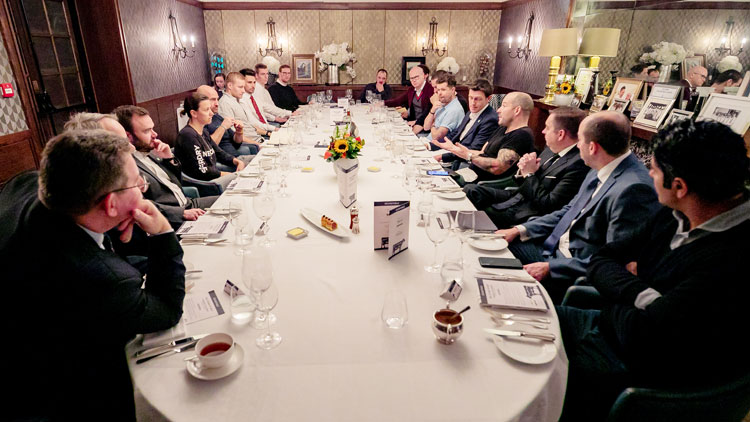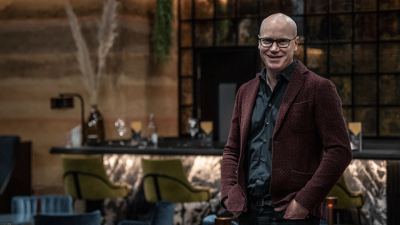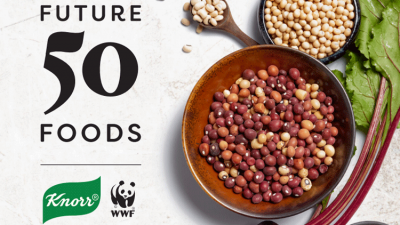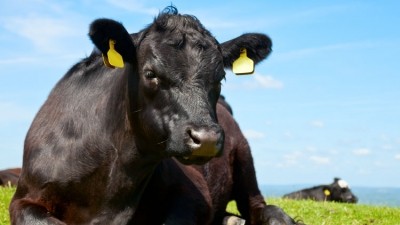The future of beef
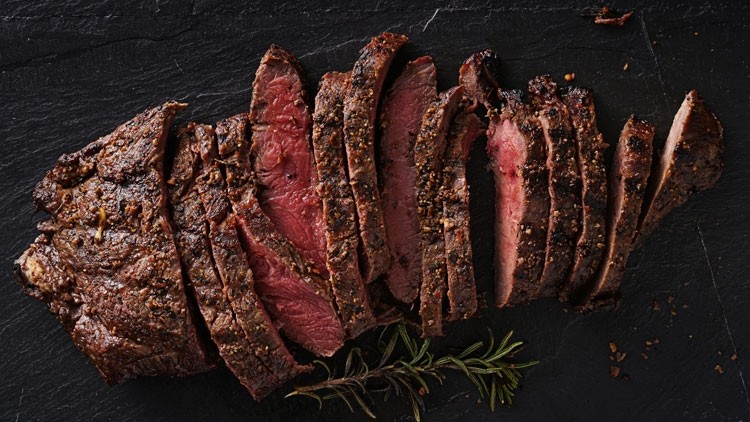
Beef consumption trends in restaurants
Neil Rankin (Simplicity Burger, Temper): In Temper the consumption hasn’t gone down; Temper Soho is doing the same numbers as it was three years ago. People are just as excited about eating beef, but there’s definitely been a switch to looking at quality. People are now a lot more aware of where your meat is coming from and what your ethics are around it, and that’s something I’ve been conscientious about since PittCue and at Smokehouse, where we bought in whole cattle from farms and butchered them ourselves. To me, that’s the most sustainable way to do what we’re doing.
Razak Helalat (The Coal Shed, The Salt Room): The word flexitarianism is cropping up more and more; people are choosing to eat less meat but great quality meat. Provenance, sustainability and animal welfare is more important than just eating more of it. It’s having a balanced diet and eating the good stuff, that’s what we’re finding. Our guests are wanting to know where our beef is from and its story.
Robin Gill (The Dairy, Darby's): The meat industry is being blamed for climate change and deforestation and there’s a bit of a divide. I’ve just opened Darby’s and anyone who goes to the toilet walks past half a cow because we do whole animal butchery in the restaurant. We’ve had vegans say they never want to come again, so we’ve had to change a bit. We’re an oyster bar and grill but we’ve adjusted our menu to have more things available because vegetarians and vegans felt a bit left out.
Martin Williams (Gaucho Group, M Restaurants): We have seen fewer people eat meat in our restaurants. At Gaucho, we’ve headed towards the M Restaurant-style menu, with more vegetarian options. It removes the veto voter where people can go out and don’t have to have steak. It’s important for us to do, and also responsible.
The reputation of the beef industry
NR: Worldwide opinion is that factory farming and beef production need to be reduced, and it should. The trouble is we are in a country where it’s not an issue, methane levels in the UK have gone down compared with a sharp rise in China and Russia and India. The way we produce cows [in this country], the grass feeding we do and the way we don’t factory farm on big levels means it’s not a British issue, but it is a worldwide issue.
Simon Smith (Aubrey Allen): Do you not think that’s down to education?
NR: It is, but I think we’ve lost that education.
RH: It’s mass production that’s causing the problem. The way British beef is reared and the high animal welfare makes it expensive because it’s so good.
Donal Denvir (Bord Bia): We track consumer sentiment on different foods and for beef, taste is the primary driver. But what’s underpinning that? It’s because it is grass fed. Then we educate people that the cows are outdoors for 230 days a year, it’s about good animal welfare practice. But if it doesn’t taste good, you can’t have that conversation.
Shaun Searley (The Quality Chophouse): Educating people is easier said than done, but we do need to educate about a balanced diet.
Pip Lacey (Hicce): Education is probably long gone. Because of propaganda and social media, the truth about meat consumption and farming is not being heard.
Joe Burke (Bord Bia): There’s a huge amount of people who haven’t yet made their minds up about what is the right choice and whether they should be cutting back [on meat consumption] or a bit more careful in relation to the choice of meat they are buying in a restaurant.
"In Ireland we have a very robust and
well established quality
assurance scheme"
Beef quality
Sandy Anderson (Elior): We absolute do have great beef in this country and we are proud that all our [Elior’s] beef is from UK and Ireland. We don’t import from anyone else in the world. All our beef is Bord Bia or Red Tractor accredited as a minimum standard.
Simon Smith: What is quality? There are 56 different grades of meat for any butcher to buy from an abattoir, but nothing there that actually says this is a quality eating animal. If you go to America there’s Select, Choice and Prime beef grades and you actually get what you pay for. It’s the same in Australia. We need to be working towards better farming and bringing out the very best and rewarding farmers for that. That’s where I believe we can improve.
NR: In America, prime beef is encouraging factory farming. In order to achieve Prime they have to feed their cows with corn early to make more money out of it, and you get worse beef as a result of that. There is a grading system that works, I’m not too sure this is it.
Simon Smith: I’m not saying it is. But of the different grades in the European standard, nothing is actually on eating quality and that’s what we need to address to encourage farmers to work that little bit better. We’re doing a big campaign from 5 November to promote cattle and to educate people about grass-fed beef and how good it is for the environment. Sixty five per cent of the UK is unfit for growing arable so it’s there to be farmed. If we can continue to have grass-fed cattle that fertilises the land, the land then takes in a lot of carbon.
DD: One of the things I’m hearing round the table is about truth. We’ve done a lot of work since 2012 around establishing evidence for the quality and sustainability of Irish beef. Our challenge is we’ve got this evidence, what’s the best way to communicate it?
JB: Bord Bia is launching a meat and dairy facts campaign in collaboration with our stakeholders. We’re not trying to run down people who have chosen to eat a vegetarian-based diet, it’s more about putting out the facts about beef coming from grass-fed production. In Ireland, we have a very robust and well-established quality assurance scheme which is very similar to Red Tractor. One of the differences is we measure the carbon footprint of all of the farms, which lets us verify that it’s actually produced with a very low carbon footprint. A number of Irish farmers are reducing their carbon footprint and making tweaks to their production systems. They are still hitting the grades but using ethical and sustainable production methods.
Origin vs breed
SA: From a contract catering perspective it is origin, not breed, that is most important because I don’t get breed information. We don’t know the breed because it’s all boxed up. I know where it comes from and our clients want to know which country it comes from. It’s challenging for me to get down to the finer detail such as breeds.
NR: If you go to an abattoir there is often not much information on carcases about what breeds they are. A lot is marketing, but a lot of it is misdirection.
Simon Smith: We buy in the whole animal and on it you get labels so we can trace it back. But even when we tell the chef it’s an Angus or Charolais, it could end up on the menu as Belted Galloway. There’s sometimes a little bit of romance when it comes to menu writing.
John Williams (The Ritz): Integrity is so important when dealing with suppliers.
Shaun Searley: If the quality in the farming is shot you’re not going to get a good product. In terms of what guests should look for, their motivation should be going to a restaurant that builds its reputation on provenance. Then the identification of a specific breed can come in. Dexter is one of the most prestigious breeds because it has been made fashionable. Often people come in only wanting [that breed] – but we have these other great animals too.
JW: There has been a trend in serving old dairy cows, which is not something I would ever want to use, but I still want my beef to be as sustainable as possible. We need to get the message across about the quality of the animal and it being of the right age to utilise it at its best. In my time it was spent meat but now it’s become fashionable, and this can cause confusion.
JB: In Ireland we have culled dairy cows but they are not something we sell to the UK market. If you wanted to develop a system around fattening older cows at the end of their useful life from a dairy perspective you can, but why would you want to be eating into your space for prime beef with an animal that’s probably more variable and will definitely be tougher?
Simon Smith: The size of the farm is important as well. We don’t have the volumes available on a daily basis and we can’t say that all of our beef is from a certain farm.
JW: If you’ve got a good butcher they will tell you straight away if they haven’t got enough of it from one farm.
RG: It’s all about trust and building relationships all the way through.
JB: Irish farmers have been at the forefront of developing a breed-based offering such as Hereford for prime product and using this breed in a certain way at a certain age.
Different cuts
Shaun Searley: Our guests want variation, they want to be challenged so they challenge us and ask for different offal products, like spleen, as well as different steaks. We need to make sure we push ourselves and educate the team as well as the guest – not just to be sustainable but to be excited to come into work day in, day out.
PL: If you deliver a lesser cut and it is delicious because of the way you’ve cooked it, then that trust is there. Our new head chef put duck breast on the menu and that was all we were going to sell because people still like that prime cut. But that’s not what we are about so we’ve changed it up with different [duck] cuts and have been more inventive and exciting, and everyone is still ordering it.
NR: It’s all about the marketing and how it reads on the menu. The beef fat tacos at Temper are the best-selling dish and they came from the fact people were leaving the fat on their beef. So we cut it off ourselves and sold it in a taco.
MW: There is more appetite among guests for secondary cuts, but it’s more in other menu items. We make our tartare with knuckle. But if we wrote knuckle tartare it wouldn’t sell, so we sell it as steak tartare and explain it comes from the knuckle, which they find acceptable.
David Carter (Smokestak,Manteca): Our entire menu is based on secondary cuts, like ox cheek, brisket, pork shoulder, pig’s head. We take things that are definitely not prime, although cuts such as ox cheeks and short rib have got more expensive.
Mark Hastings (Mandarin Oriental): That’s the complete opposite to us. We work closely with Aubrey Allen to make sure the fillet, rib eye and wing ribs are consistent. We take the team out to Ireland every year to make sure of this consistency. The trust thing is very important.
JW: We use a lot of offal, cheeks and brisket because we have the scope of the whole hotel rather than just the restaurant.
Simon Smith: We need to tell young chefs about the unfashionable cuts. Every cut is equal, it just needs to be worked in a different way.
RH: You can now get bone marrow in Waitrose, and short ribs, which is something you probably couldn’t have found 10 years ago. Lesser cuts have become fashionable through restaurants and chefs.
NR: Is that a good thing? We have created fashions for certain cuts that mean they have become more expensive. I don’t know whether it’s counterproductive because some cuts that used to be accessible are now expensive.
"People will always be happy to pay
a premium for good
quality beef"
Sustainability/traceability
JB: There are 52,000 farms in our quality assurance scheme participating in Origin Green. At meat plant level, we insist they make a commitment to the environment as well with things such as being more energy efficient. Even among our biggest processors there is an ambition to supply to tighter specifications that chefs and restaurants now demand and do it in a more transparent way.
SA: It’s how that information truthfully comes down to us buyers and whether what’s in the box is what people are saying it is. We’ve had a lot of bad press in the meat industry over the years, it’s been very slow to react to get better transparency. It needs to be easier for us to get that information.
DC: If you go to the farms and know your butcher, you trust them. If we order a product we expect it to fit the spec. But we’re small, so we can do that.
James Knappett (Kitchen Table): I couldn’t shift a whole cow in a year in my restaurant, but I know the farmer’s name and the age of the beef very well. Last night we served beef that was 199 days old,
the next day it will be 200 days old and so on, until it’s gone.
JW: Things have improved. When I was younger, I’d be told all kinds of lies. Unless you had a good relationship with your butcher, you wouldn’t have a chance. The customer is driving this whole sustainability aspect; they want to know where their meat comes from. Working with honourable suppliers is where the improvements have come.
DD: A big part of what we do is to establish proof points. We bring people over to see the farmers and abattoirs.
RG: Looking at what’s ethical and what’s right for the environment, both of those things are expensive. I’d like to see less taxation for farmers using more responsible techniques and producing lower carbon emissions. If there was a tax relief, that would hugely benefit the industry.
Brexit
JB: We are prepared for all eventualities. From our perspective, regardless of what happens, the UK market is still a priority for Bord Bia and Irish beef. Irish beef has traditionally been the choice for the majority of British customers, we have common production systems and finishing of beef to a very high standard. I don’t envisage a huge change overnight in terms of switching to different tariff regimes or duties or adhering to additional paperwork, but we are prepared for those things.
DD: The UK is 65% self-sufficient on beef and it is still going to need to import a significant amount. Ireland supplies 70% of the imports, which is a huge trading relationship. We track consumer sentiment and there’s a strong relationship when it comes to beef. UK consumers associate Ireland with England, Scotland and Wales. It’s seen as local, and that’s a position we are looking to defend.
Future trends
RG: I think we’re going to eat less beef in the future. It will become more of a treat.
DC: I agree. People will eat less beef but much better quality, and will be prepared to pay more for it.
JK: Some of the beef now served is so powerful in flavour people can often only eat smaller portions. If you gave people much more they wouldn’t eat it anyway. I think we shall see smaller portions of better meat being served.
MW: People will always be happy to pay a premium for good quality beef.
This article was based on a roundtable discussion held in association with Bord Bia
